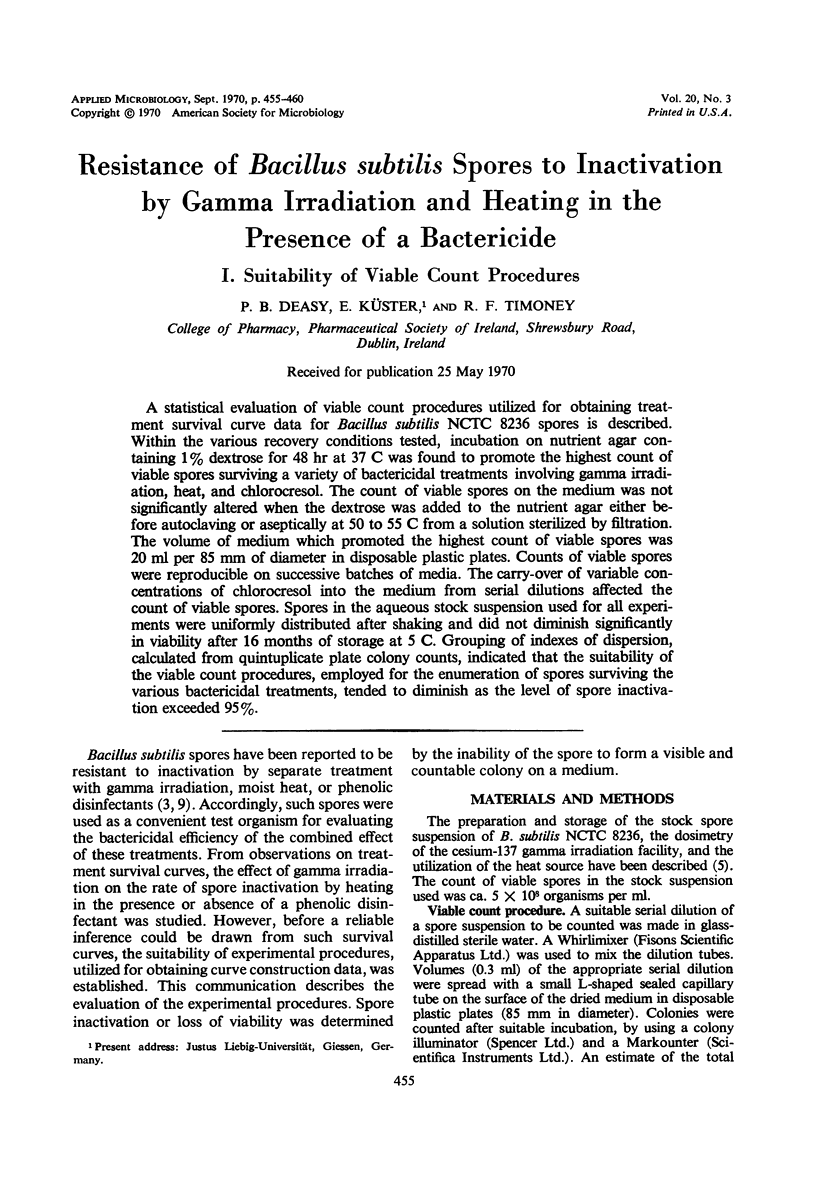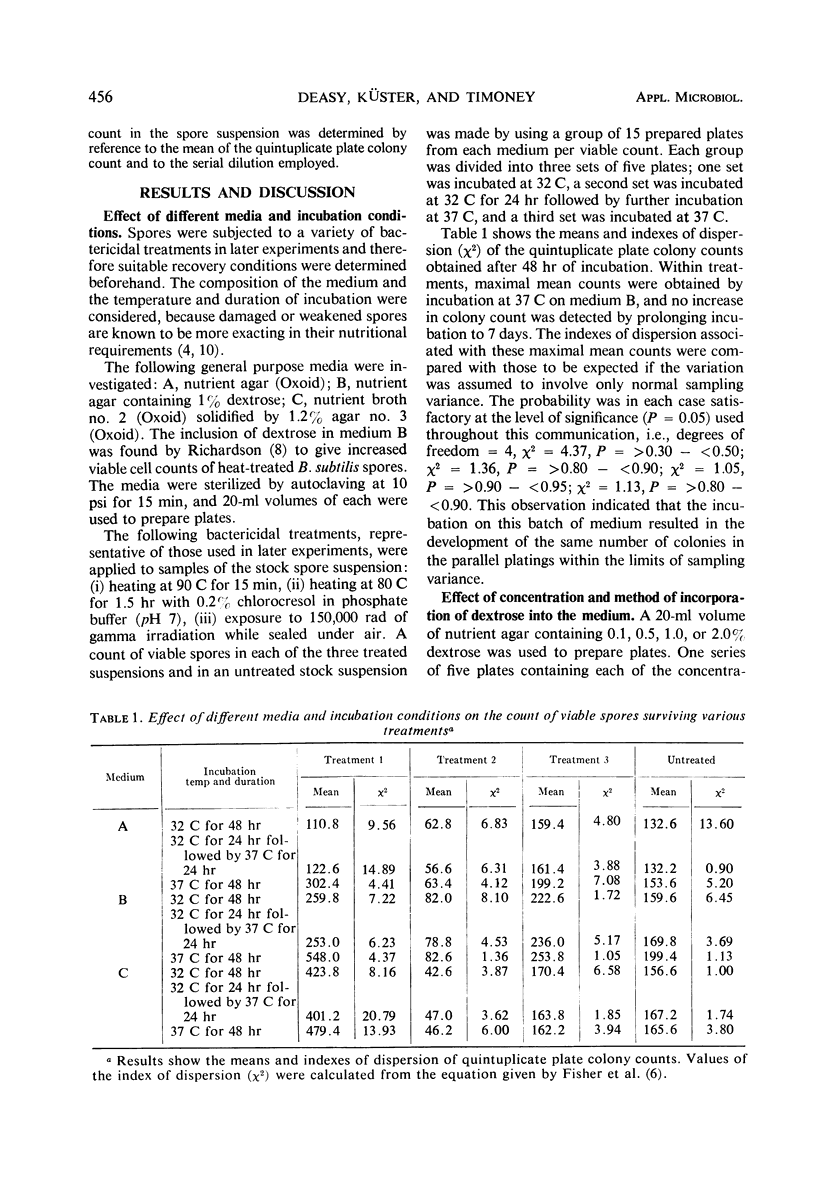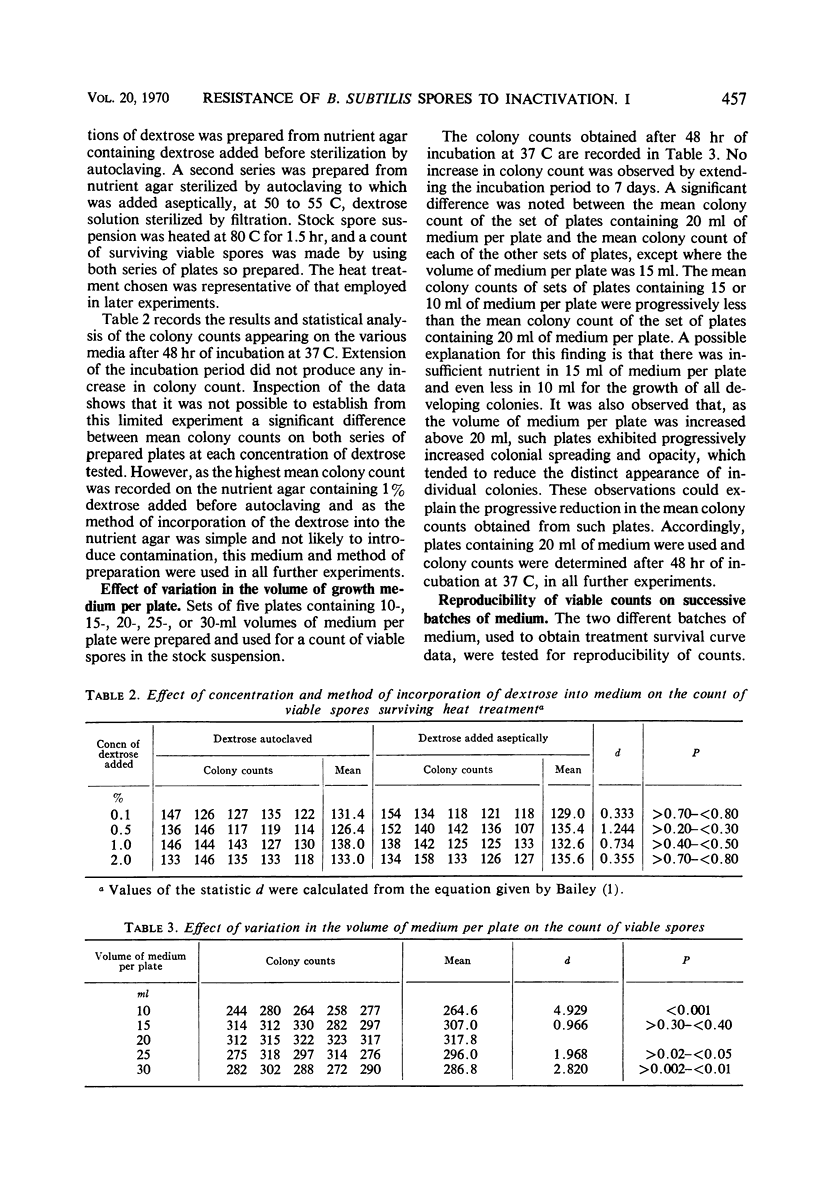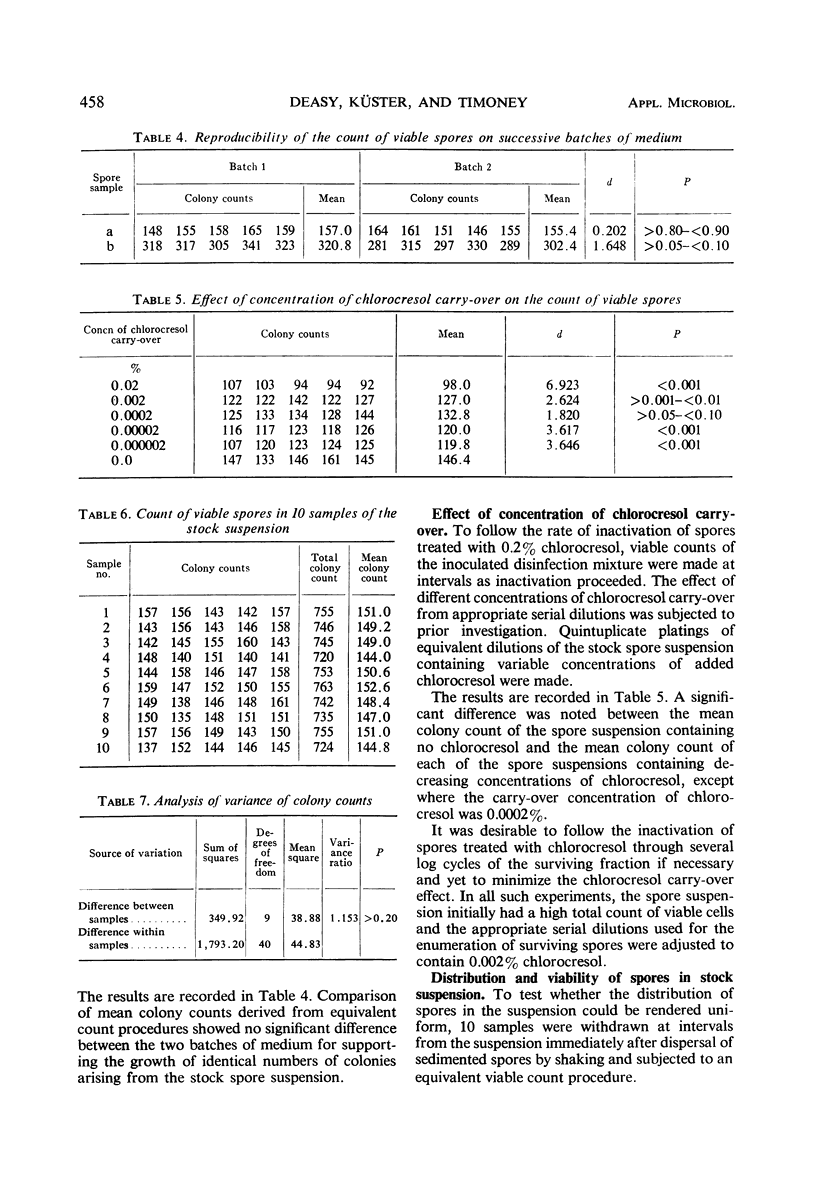Abstract
A statistical evaluation of viable count procedures utilized for obtaining treatment survival curve data for Bacillus subtilis NCTC 8236 spores is described. Within the various recovery conditions tested, incubation on nutrient agar containing 1% dextrose for 48 hr at 37 C was found to promote the highest count of viable spores surviving a variety of bactericidal treatments involving gamma irradiation, heat, and chlorocresol. The count of viable spores on the medium was not significantly altered when the dextrose was added to the nutrient agar either before autoclaving or aseptically at 50 to 55 C from a solution sterilized by filtration. The volume of medium which promoted the highest count of viable spores was 20 ml per 85 mm of diameter in disposable plastic plates. Counts of viable spores were reproducible on successive batches of media. The carry-over of variable concentrations of chlorocresol into the medium from serial dilutions affected the count of viable spores. Spores in the aqueous stock suspension used for all experiments were uniformly distributed after shaking and did not diminish significantly in viability after 16 months of storage at 5 C. Grouping of indexes of dispersion, calculated from quintuplicate plate colony counts, indicated that the suitability of the viable count procedures, employed for the enumeration of spores surviving the various bactericidal treatments, tended to diminish as the level of spore inactivation exceeded 95%.
Full text
PDF





Selected References
These references are in PubMed. This may not be the complete list of references from this article.
- Briggs A. The resistances of spores of the genus Bacillus to phenol, heat and radiation. J Appl Bacteriol. 1966 Dec;29(3):490–504. doi: 10.1111/j.1365-2672.1966.tb03500.x. [DOI] [PubMed] [Google Scholar]
- Curran H. R., Evans F. R. The Importance of Enrichments in the Cultivation of Bacterial Spores Previously Exposed to Lethal Agencies. J Bacteriol. 1937 Aug;34(2):179–189. doi: 10.1128/jb.34.2.179-189.1937. [DOI] [PMC free article] [PubMed] [Google Scholar]
- Deasy P. B., Küster E., Timoney R. F. Influence of gamma-irradiation and heating in the presence of a bactericide on the inactivation of Bacillus subtilis spores. Appl Microbiol. 1968 May;16(5):810–811. doi: 10.1128/am.16.5.810-811.1968. [DOI] [PMC free article] [PubMed] [Google Scholar]
- RUSSELL A. D., LOOSEMORE M. EFFECT OF PHENOL ON BACILLUS SUBTILIS SPORES AT ELEVATED TEMPERATURES. Appl Microbiol. 1964 Sep;12:403–406. doi: 10.1128/am.12.5.403-406.1964. [DOI] [PMC free article] [PubMed] [Google Scholar]
- Richardson G. The viability of spores of some Bacillus species. J Pharm Pharmacol. 1965 Dec;17:12S–19S. doi: 10.1111/j.2042-7158.1965.tb07735.x. [DOI] [PubMed] [Google Scholar]


